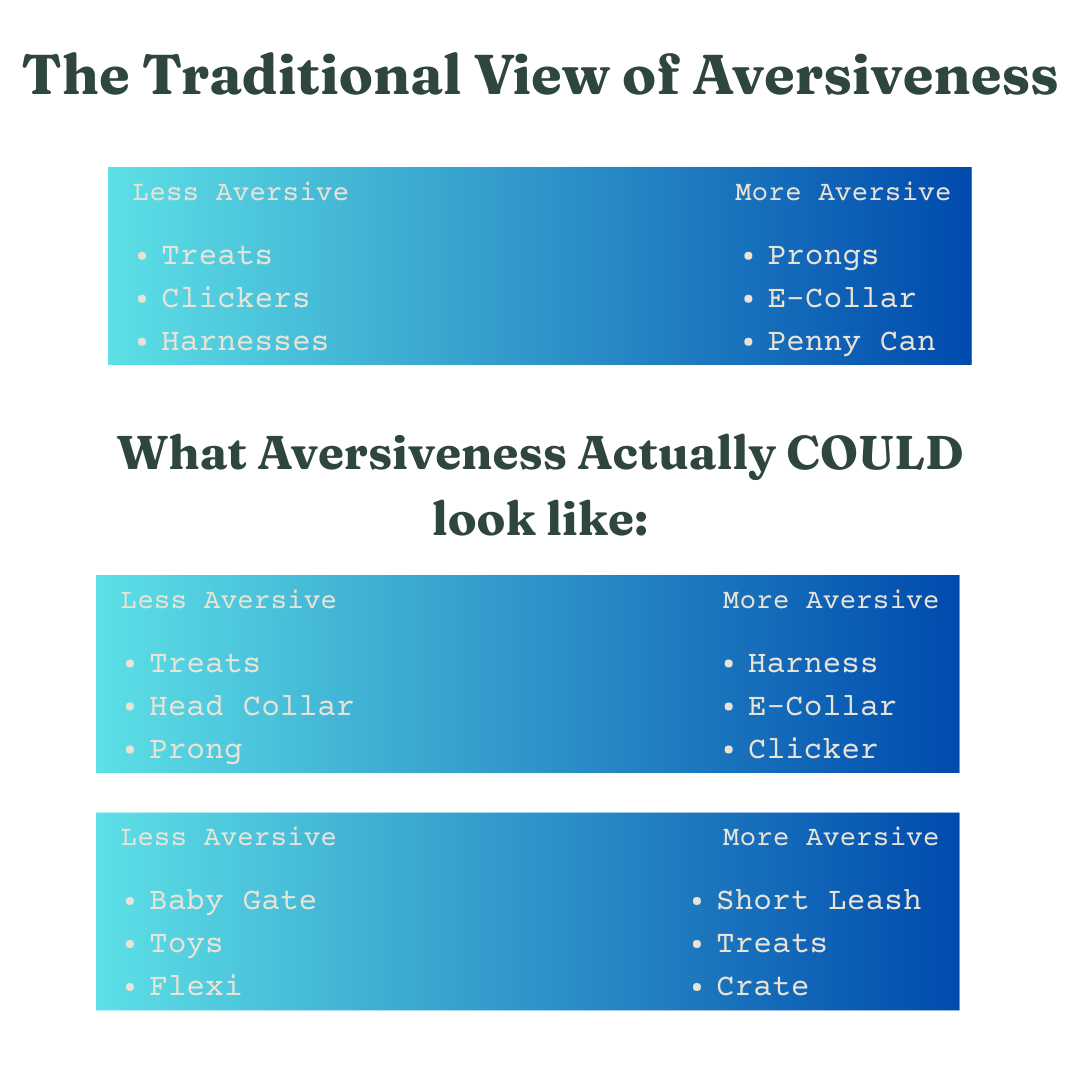Let’s talk about Training Tools
One of the most divisive topics in the dog training world is which tools are “right” or “wrong” to use. Scroll through social media, and you’ll see endless debates — prong collars vs. harnesses, flexi leashes vs. long lines, e-collars vs. clickers.
For many, the tools you use are treated as a reflection of your ethics, your skills, and even how much you care about your dog. That kind of judgment causes deep divides between trainers, clients, and communities — and it doesn’t help the dogs.
At Peak Condition Dog Training, I take a different approach.
A Welfare-First, Science-Based Philosophy
I subscribe to the Humane Hierarchy, a framework developed by Dr. Susan Friedman in 2015 that outlines a stepwise approach to behavior change. This roadmap guides every decision I make, from evaluating your dog’s wellness to choosing the right training strategies and tools.
As a CPDT-KA certified trainer, I’m held accountable to this process by the governing body of the CCPDT. But beyond certification, my background in biology and chemistry gives me a unique advantage: I can read and interpret scientific research and apply the latest findings directly to your dog’s training plan.
When I call myself a science-based trainer, I mean more than just “positive reinforcement.” It means I use data, observation, and evidence-based reasoning to decide what’s best for each individual dog.
Step One: Wellness Comes First
Before we talk about tools, we talk about health and welfare. A dog who’s in pain, chronically stressed, or sleep-deprived isn’t set up for success.
During my intake process, I look at:
Physical and nutritional wellness
Sleep quality
Enrichment and exercise
Signs of pain or discomfort
For example, a client recently came to me after their dog “suddenly” bit a family member. After watching her move and asking targeted questions, I suspected pain — and I was right. We referred her to a veterinary sports medicine specialist before starting any behavior modification.
A healthy, comfortable learner is the foundation of every successful training plan.
How I Choose Tools
I don’t believe in labeling tools as “good” or “bad.” Instead, I evaluate them based on three criteria:
The handler feels confident and safe using it.
The dog does not find it unnecessarily aversive.
It gives the dog freedom of movement and agency whenever possible.
I have preferences — for example, I avoid recommending tools like prong and e-collars because they are more likely to create fear, pain, or confusion for many dogs. But I will never shame a client for what they already use. My role is to help you assess whether the tool serves your dog’s welfare and training goals.
The Dog Decides What’s Aversive
One of the most important things to understand is that aversiveness is defined by the learner — not the trainer.
Graphic showing three gradients of aversiveness, illustrating that the aversive feelings are determined by the learner, the dog, instead of the handler or trainer.
One gradient shows what people THINK is aversive: prong collars, e-collars, and penny cans as an example, with “less aversive” tools being labeled as treats, clickers, or harnesses.
The next shows the “less aversive” side as treats, a head collar, and a prong with the “more aversive” side as a harness, e-collar, and clicker. The next gradient shows the “less aversive” side as a baby gate, toys, and a flexi leash with the “more aversive” side as a short leash, treats, and a crate.
For some dogs, a harness is uncomfortable and stressful.
For others, like my dog Sunny, a clicker is aversive because of pain-related sensitivity.
Some dogs avoid prong collars; others seem excited to see them — but excitement doesn’t always mean positive feelings.
This is where valence comes in — the “yummy” vs. “yucky” emotional tone behind a reaction. A dog can look aroused when a prong comes out, but that doesn’t guarantee it’s a pleasant experience. My job is to observe behavior carefullyand respond accordingly.
Bottom Line
Training tools are just that — tools. They’re neither inherently good nor bad, but they must be chosen thoughtfully, guided by:
Welfare first
Science, not trends
The learner’s experience
When you work with me, you’ll never be shamed for what you’ve used in the past. Instead, we’ll work together to choose the best tools for your dog, your goals, and your lifestyle — while keeping their comfort, confidence, and agency at the heart of every decision.

